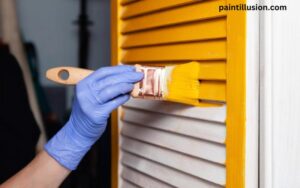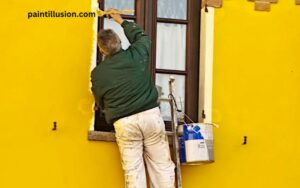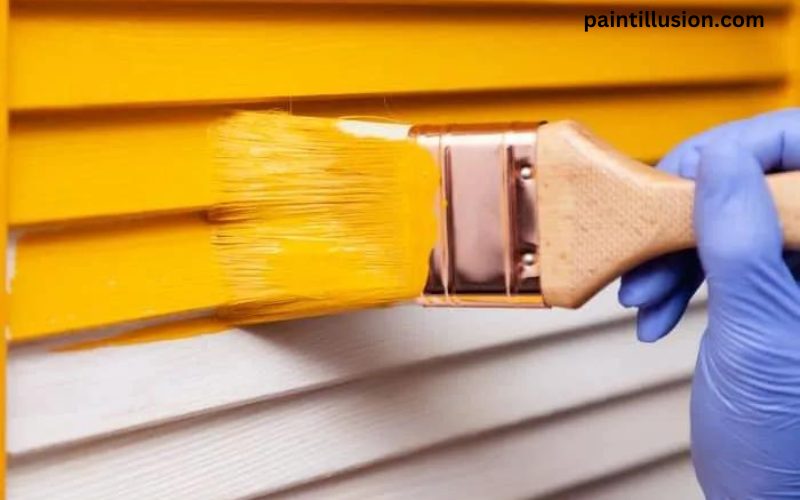When it comes to painting your home, it’s important to understand the difference between interior and exterior paint. While interior paint is designed for use indoors, you may be wondering if it’s possible to use interior paint outside. In this article, we will explore the factors to consider before using interior paint outside, the potential risks involved, and provide some tips for using interior paint outside effectively. We will also discuss alternative options and the importance of proper surface preparation. So, if you’re curious about using interior paint outside, keep reading to find out more.
Understanding the difference between interior and exterior paint
Interior paint and exterior paint are formulated differently to meet the unique demands of their respective environments. Interior paint is designed to withstand the wear and tear of everyday living, such as scrubbing, stains, and regular cleaning. It also has low levels of volatile organic compounds (VOCs) to ensure good indoor air quality. On the other hand, exterior paint is specially formulated to withstand harsh weather conditions, including rain, UV rays, and temperature fluctuations.
Factors to consider before using interior paint outside
Before you decide to use interior paint outside, there are several important factors to consider. First and foremost, you need to evaluate the climate in your area. If you live in an area with extreme weather conditions, such as heavy rain or intense sunlight, using interior paint outside may not be the best option. Exterior paint is specifically designed to withstand these conditions and provide long-lasting protection for your home.
Another factor to consider is the type of surface you are painting. Exterior surfaces, such as wood, concrete, or stucco, require a paint that can adhere properly and withstand the elements. Interior paint may not have the same durability or adhesion properties as exterior paint, which could result in peeling or flaking over time.
Lastly, you need to consider the intended purpose of the painted surface. If you’re painting an exterior wall or a door that will be exposed to the elements, it’s crucial to use a paint that provides adequate protection and durability. Interior paint may not be able to withstand the wear and tear of outdoor exposure and may require frequent touch-ups or repainting.

Potential risks of using interior paint outside
While it may be tempting to use interior paint outside, there are potential risks involved. One of the main risks is that interior paint may not be able to withstand the elements and may deteriorate quickly. Exposure to rain, sunlight, and temperature fluctuations can cause interior paint to fade, crack, or peel, leading to costly repairs or repainting.
Another risk is that interior paint may not have the same level of mildew and mold resistance as exterior paint. Exterior paint is specially formulated to resist the growth of mold and mildew, which can thrive in moist outdoor environments. Using interior paint outside could result in the growth of mold or mildew, compromising the integrity of the painted surface and potentially causing health issues.
Additionally, using interior paint outside may void any warranties or guarantees provided by the manufacturer. Most interior paints are not designed or tested for outdoor use, and using them outside could result in unforeseen issues that are not covered by the warranty.
Tips for using interior paint outside effectively
If you still decide to use interior paint outside, there are some tips to keep in mind to ensure the best results. First, make sure to choose a high-quality interior paint that has good durability and adhesion properties. Look for a paint that is specifically labeled for use on exterior surfaces or has a high resistance to weathering.
Before applying the paint, thoroughly clean and prepare the surface. Remove any dirt, debris, or loose paint, and make sure the surface is dry and free from moisture. Consider using a primer specifically designed for exterior surfaces to improve adhesion and durability.
When applying the paint, follow the manufacturer’s instructions carefully. Apply multiple thin coats rather than one thick coat to ensure proper coverage and adhesion. Allow each coat to dry thoroughly before applying the next one.
Lastly, consider applying a clear coat or sealer over the painted surface to provide additional protection against the elements. This can help prolong the life of the paint and enhance its durability.
Alternatives to using interior paint outside
If you’re hesitant about using interior paint outside or if your project requires a high level of durability and weather resistance, there are alternative options available. One option is to use a paint specifically formulated for both interior and exterior use. These paints, often labeled as “interior/exterior” or “multi-surface” paints, have properties that make them suitable for both indoor and outdoor applications.
Another alternative is to use a specialized exterior paint that is designed for the specific surface you are painting. For example, if you’re painting a wooden deck or fence, consider using a deck and fence paint that is formulated to withstand foot traffic and weather exposure. Always consult the manufacturer’s recommendations and choose a paint that is suitable for your specific project.

The importance of proper surface preparation
Whether you decide to use interior paint outside or opt for an alternative, proper surface preparation is crucial for a successful and long-lasting paint job. Before painting, make sure to clean the surface thoroughly by removing any dirt, grease, or mildew. Repair any cracks or imperfections in the surface and sand it smooth if necessary.
Priming the surface is also important, especially for exterior surfaces. A primer helps improve adhesion, enhances durability, and provides a uniform base for the paint to adhere to. Choose a primer that is specifically designed for the surface you are painting and follow the manufacturer’s instructions for application.
Taking the time to properly prepare the surface will ensure that the paint adheres well, provides optimal coverage, and lasts longer, saving you time and money in the long run.
How to choose the right exterior paint for different surfaces
When it comes to choosing the right exterior paint for different surfaces, it’s important to consider the specific characteristics of each surface. Different materials, such as wood, concrete, or metal, require different types of paint to provide the best protection and durability.
For wooden surfaces, such as siding or decks, choose a paint that is specifically formulated for wood and provides protection against moisture, UV rays, and fungal growth. Look for a paint that has good flexibility to withstand the natural movement of wood and provides a breathable barrier to allow moisture to escape.
For concrete surfaces, such as driveways or patios, opt for a paint that is designed for concrete and provides excellent adhesion and durability. Concrete paints are formulated to resist cracking, peeling, and staining, and can also provide a slip-resistant finish for safety.
For metal surfaces, such as fences or railings, choose a paint that is specially formulated for metal and provides protection against rust and corrosion. Look for a paint that has good adhesion and provides a smooth, even finish.
Always consult the manufacturer’s recommendations and choose a paint that is specifically designed for the surface you are painting to ensure the best results.
Common misconceptions about using interior paint outside
There are several common misconceptions about using interior paint outside that need to be addressed. One misconception is that interior paint can be used outside as long as it is covered with a clear coat or sealer. While a clear coat or sealer can provide some additional protection, it cannot fully compensate for the lack of durability and weather resistance of interior paint. It is always best to use a paint that is specifically formulated for exterior use.
Another misconception is that using interior paint outside is a cost-saving measure. While it may seem like a cheaper option initially, using interior paint outside can result in costly repairs or repainting in the long run. Exterior paint is designed to withstand the elements and provide long-lasting protection, which can save you money on maintenance and repainting in the future.
Pros and cons of using interior paint outside
To summarize, let’s take a look at the pros and cons of using interior paint outside:
Pros:
- Potentially lower initial cost
- Wide range of color options and finishes
- Can be easily applied by DIYers
Cons:
- Lack of durability and weather resistance
- Increased risk of fading, cracking, or peeling
- Potential voiding of warranties or guarantees
- Potential growth of mold or mildew
Conclusion
In conclusion, while it is technically possible to use interior paint outside, it is not recommended due to the potential risks and lack of durability. Interior paint is designed for use indoors and may not be able to withstand the elements or provide the same level of protection as exterior paint. It is always best to use a paint that is specifically formulated for exterior use and to properly prepare the surface before painting. If you’re unsure about which paint to use or how to proceed with your project, consult a professional painter who can provide expert advice and ensure a successful and long-lasting paint job.


This is the right blog for anyone who wants to find out about this topic. You realize so much its almost hard to argue with you (not that I actually would want…HaHa). You definitely put a new spin on a topic thats been written about for years. Great stuff, just great!